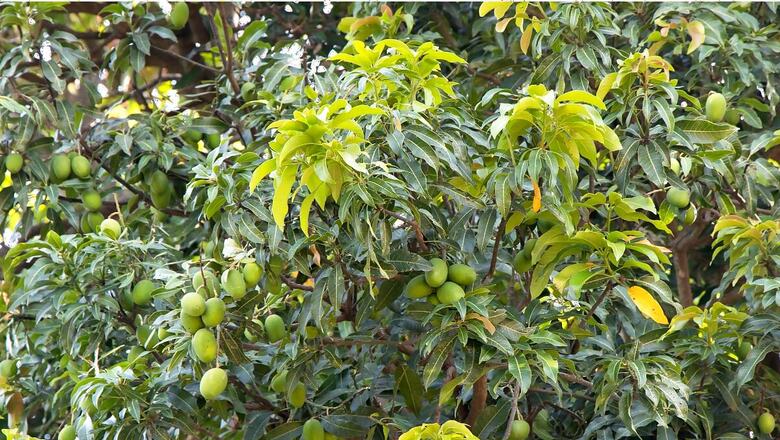
views
The best thing you can do for the environment today is to plant trees. These living beings absorb CO2 from the atmosphere and release oxygen, making them one of the most important sources of air on Earth. As the air quality declines each passing day, you should plant as many trees as possible to maintain the AQI level of your city.
As News18 Network, India’s largest news network, launches ‘Project One Tree’, a movement aiming to mobilize every Indian to plant a tree as a measure against climate change, we take a look at some of India’s best trees for producing oxygen. The marquee movement seeks to raise awareness about environmental conservation and foster collective action towards a greener, more sustainable future.
Mango Tree
Large and exquisite, the mango tree is indigenous to India. The mango tree is unique, prized for its delicious fruit and recognised for its ability to filter the air. The tree adds flavour and environmental benefits to gardens and parks and is a familiar sight across India.
Peepal Tree
The peepal tree is one of the most well-known trees that releases oxygen into the atmosphere. This tree also releases some oxygen at night in addition to most other trees, that only do so when they receive sunlight. Originating in India, the peepal tree is also known as the sacred fig or religiosa.
Banyan Tree
Originally from India, the banyan tree is a huge fig tree well-known for its unusual aerial roots, which emerge from its branches and finally touch the earth, creating new trunks. The banyan tree has a long lifespan and can grow up to 30 meters (98 feet) in height and 100 meters (328 feet) in spread. It is a well-liked shade tree that is seen in public gardens and parks. The banyan tree is a significant contributor to the local ecosystem because of its high generation of oxygen.
Arjuna Tree
With a broad crown and a large evergreen shrub, it is recognised for having the most bronchial characteristics. The shrub is also still considered to have religious importance, and it is commonly believed to serve as Sita’s favourite bush in the Ramayana. Because of its visual appeal, it is used in the landscape. Additionally, they aid in reducing pollution by removing CO2 and other particulates from the environment.
Ashoka Tree
In addition to being valued for its aesthetic qualities and cultural importance, Ashoka trees are important sources of oxygen. Its lovely, evergreen leaves also help in enhancing a landscape’s aesthetic appeal.
Indian Bael
Bel is a native of India and goes by several names, including golden apple and Bengal quince. An Indian bael can reach a height of 40–50 feet above the ground and has a typical lifespan of 30–60 years. This tree from Southeast Asia is well-known for its ability to balance the environment and absorb all chemical pollutants and harmful gasses from the atmosphere.
Teak Tree
Large deciduous teak trees are native to India and are extensively grown throughout Asia and Africa. It is renowned for producing high-quality wood that is used to make furniture, yachts, and other goods. The teak tree grows slowly, reaching up to 40 meters (131 feet) in height and up to 100 years in life.
It is a resilient tree that grows well in desert areas since it can withstand drought and poor soil conditions. In addition to its high oxygen generation, the teak tree plays a significant role in the ecology of the area.
Neem Tree
There are many good things about this tree. Neem is a naturally occurring plant that could serve as a pure air conditioner. Because of their bigger leaves, these trees can absorb many pollutants from the environment, including CO2, sulfur dioxide, and sulfur. As a result, vast volumes of oxygen are produced. They can, therefore, continue to improve the air quality inside the field when implanted at high stakes.
Bamboo Tree
A bamboo plant, which is regarded as a natural air cleanser, can absorb 80 tons of carbon dioxide annually and create over 70 tons of oxygen per acre. Bamboo is technically a grass plant, but because of its extensive woody structure and striking resemblance to a tree, it is also referred to as a bamboo tree. It’s said that bamboo can live up to 120 years. Bamboos are renowned for their resilience in challenging environments.



















Comments
0 comment